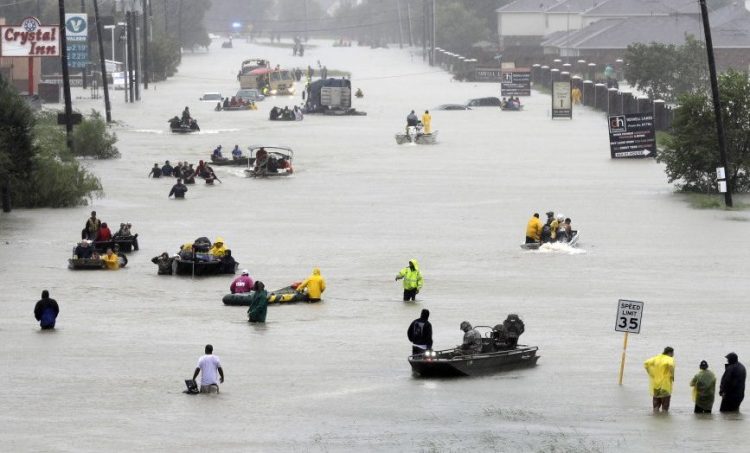Hurricanes Harvey and Irma didn’t come anywhere near New England, but we can’t afford to let our distance from the devastation in the Southeast lull us into complacency. As sea levels and precipitation rise, making severe weather more likely, so has the risk of a major flood here. The increasing number of Mainers without flood insurance for high-risk properties should rethink their stance – and Maine’s congressional delegation should push for money to better prepare for the next disaster.
Over 31,000 Maine homes are in designated flood hazard areas, according to the Federal Emergency Management Agency. But as of June 30, there were only 8,380 active flood insurance policies in Maine, down 9 percent from 2012.
Only mortgaged homes in flood hazard zones – areas where there is a 1 percent chance of a flood in any given year – are required to have flood coverage, and a lot of people in hazard zones look to pay off their note early or buy privately in order to avoid the mandate. Their personal decision, in turn, can affect the ability of the larger community to recover and move on after a natural disaster.
“People pay off their houses and they are willing to roll the dice,” Sue Baker, state coordinator of the National Flood Insurance Program, recently told the Kennebec Journal. Higher premiums have been a major deterrent to getting flood coverage, even though the $20,000 it can cost to repair the damage from just an inch of flooding far exceeds the $1,043 average annual premium in Maine.
It’s also important to note, though, that 40 to 50 percent of the Houston residents whose homes were flooded by Harvey didn’t have to have insurance, because they live outside FEMA’s mapped high-risk zones. As Slate magazine reported Sept. 7 in “Why are FEMA’s flood maps so horribly flawed?,” the maps are often out of date and fail to take into account climate change, which boosts sea levels and precipitation by driving up ocean and land temperatures.
What’s more, Slate pointed out, efforts to make the maps more accurate face a significant roadblock in the form of resistance from local officials, who want to remove obstacles to development, and local residents, who want to avoid having to shell out for flood insurance. In Maine, for example, where FEMA is making its third attempt in a decade to update state flood plain maps, South Portland recently voted to join five other communities – Harpswell, Kennebunkport, Kittery, Old Orchard Beach and Wells – in contesting the maps once they’re published later this year.
FEMA hasn’t been getting a warm reception in Washington, either. Environmental Protection Agency Administrator Scott Pruitt says now is not the time to discuss climate change. President Trump has called for zeroing out funds for flood hazard mapping and slashing the budget for a program that helps states and communities take long-term measures to reduce losses from disaster – though a 2005 study by over 50 national experts found that every $1 spent by FEMA on hazard mitigation saves $4 in post-storm rebuilding and cleanup.
A major flood can happen anywhere. To ensure that Maine and Mainers are ready for the next one, our elected representatives in Washington should push for spending more on critical initiatives like revising flood hazard maps, educating the public about flood risk and helping communities better prepare for storms. Ignoring the elevated risk of natural disasters won’t make them any less likely – and we may not have the luxury of sitting the next one out.
Send questions/comments to the editors.



Comments are no longer available on this story